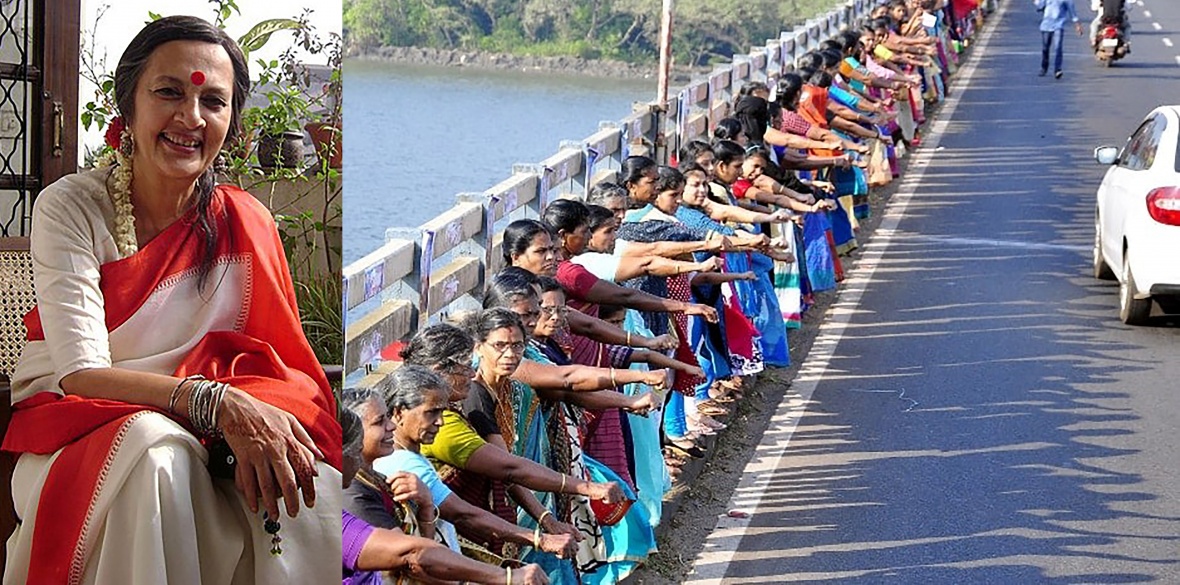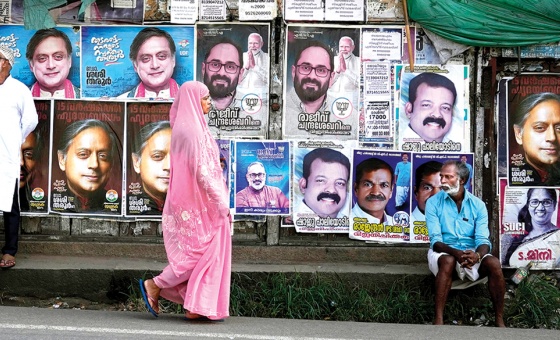This is the last article you can read this month
You can read more article this month
You can read more articles this month
Sorry your limit is up for this month
Reset on:
Please help support the Morning Star by subscribing here
THIS year we have seen shocking rapes and murders of dalit women take place in Uttar Pradesh. Are violent crimes against women such as rape becoming more common in India?
In India, in 2019 on an average every day 88 women were raped, of whom 10 were dalit.
While the National Crimes Research Bureau report 2019 reports that there were 32,034 registered cases of rape — a 7 per cent increase over the previous year — it also reports that the conviction rates remain dismal, with just 27 convictions for every 100 cases.
Uttar Pradesh, India’s largest state, run by the Bharatiya Janata Party government with an extreme right-wing bigot as the chief minister, had the highest number of crimes against dalits in the country.
So, yes, in answer to the question, sexual crimes against women are increasing.
Specifically we see a situation where ideologies of upper-caste supremacy embedded in the Manu Smriti — a religious text which is held more dear by the current rulers than the constitution of India — have led to a situation of impunity for those committing sexual and other crimes against dalit women.
Since most dalit women belong to the labouring landless classes in rural India, we see how the factors of class and caste supremacy interact to make them more vulnerable to sexual crime.
Our movements against violence against dalit women are part of the class struggle and that for social justice.
How can you fight against class exploitation in rural India without fighting the caste-based gender violence against dalit women?
The Communist Party of India (Marxist) is among those which have accused the Uttar Pradesh government and its chief minister of allowing perpetrators of these crimes to get away with it. Why is this, in your view? Is it linked to Bharatiya Janata Party (BJP) Hindutva ideology and contempt for women of lower castes in particular?
The BJP as part of the Hindu nationalist paramilitary group RSS has never accepted the constitution of India.
It believes that the Manu Smriti should be the basis for governance and that theocracy should replace democracy.
Many people believe that Hindutva is an expression of religious belief.
That is far from the truth. It is a political slogan to create a Hindu rashtra (state).
It is of course mainly directed against minority communities, specifically Muslims.
But the ideological framework is fully brahmanical with the belief in upper-caste supremacy.
They view the caste system in all its toxicity as a “necessary division of work,” the present Prime Minister had glorified the horrendous exploitation of manual scavengers, work done by dalits, as being “spiritual” — so caste is embedded in the DNA of Hindutva proponents.
The Uttar Pradesh chief minister who calls himself a yogi — Yogi Adityanath —is the poster boy for this ideology.
In his term, Uttar Pradesh has seen aggressive mobilisations of his caste brotherhood — and it is that which protects the criminals of the upper castes and also contempt for the so-called lower castes, especially the women.
Your party was among those which visited the family of a young woman who was raped and murdered, you were at first prevented from doing so, as were Congress leaders. Why did the authorities not wish you to meet the family?
There was a most cruel caste-sexual crime when a 15-year-old dalit girl was gang raped by four upper-caste men belonging to the chief minister in a place called Hathras in the state of Uttar Pradesh.
It became known as the Hathras case. The girl’s spine was grievously injured, her tongue was bitten, she died after 10 days.
The Uttar Pradesh police and administration deliberately destroyed evidence and tried to dilute the barbarity of the crime to save the culprits, who had been named by the girl in her “dying declaration.”
After the girl died, the Uttar Pradesh police forcibly cremated her body at the dead of night preventing her family from even performing the last rites.
There was national outrage. The Uttar Pradesh government literally put them under house arrest, barricaded the entire area with hundreds of policemen preventing anyone from going to see her.
But while all public mobilisations protesting against the Uttar Pradesh government were prohibited, the upper-caste mobilisations in the area were permitted, terrorising and putting tremendous pressure on the victim’s family.
The aim of the government was to force them to change their statements and to present it as a consensual relationship gone wrong between the main accused and the victim.
That is why the government did not want anyone to meet the girl. It was shameful.
This is not a new problem in India — I remember a previous Uttar Pradesh chief minister, Mulayam Yadav, who said of cases of rape “boys will be boys.” Nor is it confined to the BJP as we heard recently a Congress politician in Kerala blaming rape victims for being raped. What is the answer to a misogynist culture that endorses or belittles rape, how can it be fought?
Yes it is true that misogynist cultures have existed reflected in the cases you mention and even more.
It is also true that for decades women themselves have been blamed and held responsible for the crimes committed against them.
Why were you out at night, why were you wearing such clothes and so on. But I think it would be a mistake to equate what has been happening with the situation today.
Here you have a ruling regime both at the centre in India and in Uttar Pradesh which is committed to an ideology in which the centre of society is the “ideal” Hindu family and the “ideal” Hindu wife and mother who obeys her husband and accepts silently any domestic violence which may occur.
Her “sacred” duty is to bring up her children, preferably sons, according to tradition and culture.
Working outside the home is considered wrong. Laws against domestic violence are sought to be diluted and so on.
Self-choice marriages outside ones own caste or religious community are considered sacrilege.
BJP-led governments are now set on bringing laws which criminalise Hindu-Muslim marriages terming them as “love jihad.”
It is this approach which creates a social framework in which crimes, and sexual caste crimes against women and dalits, are increasing.
The political dimension cannot be ignored. The responsibility of the present ruling regime in ushering in a most anti-woman framework of cultures and practices is unlike anything which has gone before.
The Indian women’s movement last year pulled off an amazing achievement in the “women’s wall” of Kerala. What was the CPI(M) and All India Democratic Women’s Association involvement in this? Is the women’s movement growing in strength?
The achievement was of the women of Kerala, three million women who built a human chain — a wall, since they stood shoulder to shoulder — from one end of Kerala to the other.
It was the culmination of a campaign to defend the social reform traditions of Kerala and to take them forward.
It was a historic action and the initiative was taken by the left and democratic forces in Kerala led by the CPI(M) and included many women’s organisations.
Of course All India Democratic Women’s Association played a leading role in a month-long house-to-house campaign which stressed the issues of women’s rights and the fight against misogynist cultures in the name of tradition.
I was happy and proud to be part of the wall — it was an exhilarating experience. Women and girls of all sections of society owned the movement, with creative slogans, paintings on posters, songs, cultural, performances — it was a united answer to the forces of right-wing hate and bigotry.
So while we are proud of such achievements we are also acutely aware of the huge challenges ahead.
The fight for the working people, the working classes, working women, peasant and agricultural, worker women, homemakers in poor households, is a critical aspect of the fight for equality.
The nakedly pro-corporate neoliberal policies have led to an acute economic crisis of raging unemployment, loss of jobs, low wages, food insecurity and high prices of essential commodities.
The government has used the period of the pandemic where popular mobilisations have been restricted, to push even more anti-people policies against farmers and workers.
Intensification of the class struggle combined with the struggle for social justice and for women’s rights against the current offensive of the right-wing communal pro-corporate government headed by Prime Minister Narendra Modi is the critical task.
Violence against women can and must be fought at multiple levels, mobilising all democratic social forces, men and women, together.

 Ben Chacko
Ben Chacko









